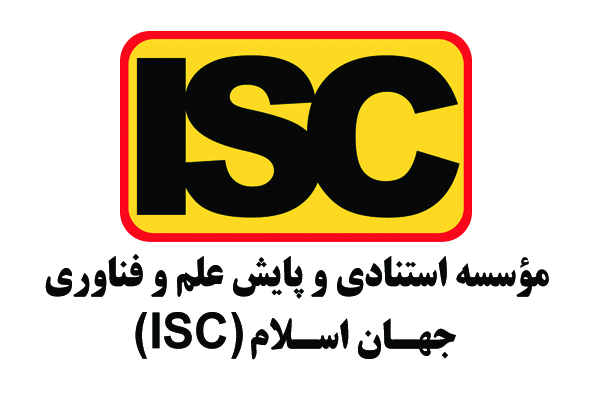Designing a Model for Improving Bank Investment Portfolios with Emphasis on Risk Management Processes Based on Digital Banking Indicators (Case Study: Refah Bank)
Keywords:
Portfolio Improvement, Bank Investment, Risk Management, Digital BankingAbstract
The aim of this study was to design a model for improving bank investment portfolios with an emphasis on risk management processes based on digital banking indicators. This research is applied in nature and follows a qualitative method with a grounded theory approach. Methodological triangulation was employed in this study by using various data collection methods such as literature review, examination of specialized resources and texts, and semi-structured interviews. Based on purposive sampling, 18 managers and experts from Refah Bank were interviewed in 2023. The interviews were coded using ATLAS.TI software. To validate the obtained results, the data were evaluated and analyzed for validity through triangulation. The research findings were categorized into five themes: causal conditions, contextual conditions, intervening conditions, strategies, and outcomes, which were further divided into four categories: individual, group, organizational, and societal. A model was identified comprising six themes and 19 axial codes based on 85 open codes. In designing the model for improving the bank's investment portfolio with an emphasis on risk management processes, the use of digital banking indicators is of great importance. These indicators measure the key concepts related to the bank's performance in various domains and serve as effective tools in improving performance and reducing financial risk. By periodically analyzing the obtained data and continuously reviewing the digital banking indicators, the model should have the ability to predict market changes and adapt to customer needs. This ongoing process aids in the continuous optimization of the portfolio and alignment with various business environment variables, thereby contributing to the preservation and improvement of the bank's investment performance.
Downloads
References
Alinejadi, B., Sarlak, A., & Kiani, K. (2022). Investigating the Role of Electronic Devices in Banking Costs. Environmental
Energy and Economic Research, 6, 1-18. https://www.eeer.ir/article_148212_a8981510a588f0fc8268a1f23e4c0341.pdf
Bertin, C., & Schaeffer, V. (2020). Organizational impact of digital open innovation in retail banks: Managing external and
internal pressure. In Managing Digital Open Innovation (pp. 299-324). https://doi.org/10.1142/9789811219238_0011
Cao, T., Cook, W. D., & Kristal, M. M. (2022). Has the technological investment been worth it? Assessing the aggregate
efficiency of non-homogeneous bank holding companies in the digital age. Technological Forecasting and Social Change,
https://doi.org/10.1016/j.techfore.2022.121576
Georgescu, I., & Kinnunen, J. (2021). The Digital Effectiveness on Economic Inequality: A Computational Approach. In
Business Revolution in a Digital Era (pp. 23). Springer. https://doi.org/10.1007/978-3-030-59972-0_16
Ghasemi, Z., Afshar Kermani, M., & Allahviranloo, T. (2021). Exploring the Main Effect of e-Banking on the Banking Industry
Concentration Degree on Predicting the Future of the Banking Industry: A Case Study. Advances in Fuzzy Systems.
https://doi.org/10.1155/2021/8856990
Gómez, J. A., Arévalo, J., Paredes, R., & Nin, J. (2018). End-to-end neural network architecture for fraud scoring in card
payments. Pattern Recognition Letters, 105, 175-181. https://doi.org/10.1016/j.patrec.2017.08.024
Heidarzadeh Aghdam, N. (2021). Presenting a risk management model in digital banking - A rational approach. Investment
Knowledge, 37, 489-515. http://www.jik-ifea.ir/article_17120_en.html?lang=en
Irfan, M., Elavarasan, R. M., Ahmad, M., Mohsin, M., Dagar, V., & Hao, Y. (2022). Prioritizing and overcoming biomass
energy barriers: Application of AHP and G-TOPSIS approaches. Technological Forecasting and Social Change, 177.
https://doi.org/10.1016/j.techfore.2022.121524
Josheski, D., & Boshkov, T. (2022). Monetary economics: Post-Keynesian Stock-Flow Consistent approach (PK-SCF) versus
New-Keynesian Dynamic Stochastic General Equilibrium (NK-DSGE). SSRN Electronic Journal.
https://doi.org/10.2139/ssrn.3998312
Kamdjoug, J. R. K., Wamba-Taguimdje, S. L., Wamba, S. F., & Kake, I. B. E. (2021). Determining factors and impacts of the
intention to adopt mobile banking app in Cameroon: Case of SARA by afriland First Bank. Journal of Retailing and
Consumer Services, 61. https://doi.org/10.1016/j.jretconser.2021.102509
Kanungo, R. P., & Gupta, S. (2021). Financial inclusion through digitalisation of services for well-being. Technological
Forecasting and Social Change, 167. https://doi.org/10.1016/j.techfore.2021.120721
Kitsios, F., Giatsidis, I., & Kamariotou, M. (2021). Digital Transformation and Strategy in the Banking Sector: Evaluating the
Acceptance Rate of E-Services. Journal of Open Innovation: Technology, Market, and Complexity, 7(204).
https://doi.org/10.3390/joitmc7030204
Niemand, T., Rigtering, J. P. C., Kallmünzer, A., Kraus, S., & Maalaoui, A. (2021). Digitalization in the financial industry: A
contingency approach of entrepreneurial orientation and strategic vision on digitalization. European Management Journal,
, 317-326. https://doi.org/10.1016/j.emj.2020.04.008
Paiva, B. M., Ferreira, F. A., Carayannis, E. G., Zopounidis, C., Ferreira, J. J., Pereira, L. F., & Dias, P. J. (2021). Strategizing
sustainability in the banking industry using fuzzy cognitive maps and system dynamics. International Journal of
Sustainable Development and World Ecology, 28(2), 93-108. https://doi.org/10.1080/13504509.2020.1782284
Potapova, E. A., Iskoskov, M. O., & Mukhanova, N. V. (2022). The Impact of Digitalization on Performance Indicators of
Russian Commercial Banks in 2021. Journal of Risk and Financial Management, 15, 452.
https://doi.org/10.3390/jrfm15100452
Sandhu, S., & Arora, S. (2020). Customers' usage behaviour of e-banking services: Interplay of electronic banking and
traditional banking. International Journal of Finance & Economics. https://doi.org/10.1002/ijfe.2266
Sawhney, A., & Ahuja, V. (2021). Drivers of social media content marketing in the banking sector: A literature review.
International Journal of Service Science, Management, Engineering, and Technology, 12, 54-72.
https://doi.org/10.4018/IJSSMET.2021050104
Starodubtseva, E. B., Grachyova, M. V., & Trachenko, M. B. (2021). Digitalization as a driver of the banking sector. In
StudSystDecisControl (Vol. 314, pp. 607-613). https://doi.org/10.1007/978-3-030-56433-9_63
Úbeda, F., Forcadell, F. J., Aracil, E., & Mendez, A. (2022). How sustainable banking fosters the SDG 10 in weak institutional
environments. Journal of Business Research, 146, 277-287. https://doi.org/10.1016/j.jbusres.2022.03.065
Yu, Y. (2019). A preliminary exploration on stochastic dynamic asset allocation models under a continuous-time sticky-price
general equilibrium. Applied Economics, 51(4), 373-386. https://doi.org/10.1080/00036846.2018.1497851
Zakari, A., Toplak, J., Ibtissem, M., Dagar, V., & Khan, M. K. (2021). Impact of Nigeria's industrial sector on level of
inefficiency for energy consumption: Fisher Ideal index decomposition analysis. Heliyon, 7.
Downloads
Published
Submitted
Revised
Accepted
Issue
Section
License
Copyright (c) -1 Journal of Technology in Entrepreneurship and Strategic Management (JTESM)

This work is licensed under a Creative Commons Attribution-NonCommercial 4.0 International License.











